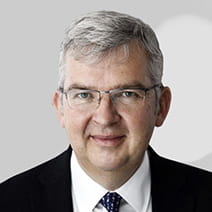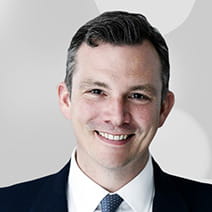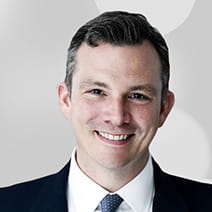The world is at an inflexion point. As with all inflexion points, this presents challenges and opportunities for investors, including how it impacts the way they should approach asset allocation in the future.
There are two key drivers of change for investors that are likely to make the next 10 years of investing different from the previous decade: the higher inflationary environment and the fragmentation of globalisation. While Strategic Asset Allocations (SAAs) have traditionally been largely based on the historic performance of asset classes, in the future investors will need more intelligence and insights to create long-term SAAs.
It is for this reason that we have chosen to work with Hymans Robertson (Hymans) to provide our SAAs, along with Defaqto for risk profile oversight. As part of Hymans’ expertise, they will provide the capability to create bespoke Liontrust features and a greater suite of asset classes and variability within asset classes for the SAA.
These capabilities will ensure that the Liontrust MA Funds and Portfolios are well positioned to exploit the opportunities and mitigate the challenges for the next 10 years of investing.
Global markets are changing
As much as 2022 was tumultuous for financial markets, with drastic rises in interest rates by central banks to counter soaring inflation, concerns over the global economy and Russia’s invasion of Ukraine, the world economy and markets have been undergoing more fundamental changes for many years. Decades of globalisation have increased the world’s connectivity and inter-dependence, while exponential advances in technology have made financial markets faster-moving and more complex. Sophisticated tools are required to process vastly greater volumes of data and to identify the key factors driving markets.
While the world is changing in many ways, we identify two key themes for investors:
● Covid continues to have a long-lasting impact, especially in terms of fundamentally changing the inflation regime. The longevity of this change remains to be seen, but we are likely to be in an era of above 2% inflation rather than below for some time. Government bond yields are likely to be closer to 3-4% than the zeros or near-zeros spurred by the Global Financial Crisis (GFC). We have returned to a ‘more normal’ environment.
● Globalisation is now fragmenting. International collaboration is breaking down, and countries such as the US are looking to re-shore and onshore away from prospective competitors. This will have significant long-term effects on markets.
These two factors mean that the world is at an inflexion point, making it an optimal time for a change in approach.
Perfect hindsight at the beginning of the 2010s would have led an investor to have a bias towards US assets, given the phenomenal performance of technology growth stocks such as Facebook, Apple, Amazon, Netflix and Google. Going forwards, however, the argument for a diversified and flexible portfolio is stronger than ever. The assets that outperformed strongly over the last decade because of pervading conditions are unlikely to be the consistent outperformers over the next decade as other market drivers come in to play. Markets will shift quickly and their cycles shorten as ever greater volumes of information will be delivered more rapidly and the geopolitical landscape evolves. There will be differences in the direction of fiscal and monetary policy across the world as it becomes more fragmented.
In such an environment, it will be important to have an investment approach that can cut through the noise and respond to market nuances, investing in a diversified range of asset classes, styles and funds in a more steady way with neither reliance on any one scenario playing out nor wholesale shifts in allocations.
Strategic Asset Allocation
Determining the Strategic Asset Allocation (SAA) is the first stage in the Liontrust Multi-Asset (MA) investment process. It is the default asset allocation that is designed to achieve the objectives of a fund or portfolio over the long term. Liontrust announced in January that following a thorough review, the SAAs for the MA Funds and Portfolios are now provided by Hymans Robertson (Hymans) and risk profile oversight provided by Defaqto.
SAAs have traditionally largely been based on analysing the past performances of asset classes, both in isolation and together. In the future, this will not be sufficient. Investors will need more intelligence and insights to create longer-term SAAs.
Hymans will provide us with three key attributes, including scale and expertise, an enhanced partnership and enhanced modelling. It has a near 100-year history in financial services and extensive experience of partnering with trustees and financial companies. It provides access to a large team of professionals and systems that give us the best chance of attaining and maintaining suitability for financial advisers and their clients. This will be aided by the greater detail and enhanced timeliness of the bespoke responses we will receive and the depth of our interactions with Hymans. On an annual basis, our asset mix will be reviewed with Hymans to help construct the next set of SAAs, ensuring optimal diversification.
Key differentiators
There will be no dramatic changes to the SAAs we currently use for our portfolios. These are based on extensive analysis of asset classes over many years.
However, our partnership with Hymans will provide the capability to create bespoke Liontrust features in the portfolio design process. We continuously look to enhance our SAAs to obtain a more accurate reflection of what our MA portfolios can trade and we expect to extend this range to more sub-asset classes.
Hymans’ Economic Scenario Service will provide us with a greater suite of asset classes and greater variability within the asset classes to select in our SAAs. For example, Hymans has created a bespoke model for an “alternative investments” asset class through a combination of listed and unlisted infrastructure vehicles, global and UK real estate investment trusts, commodities, index-linked gilts and cash. This will replace our current use of UK Property within the SAA and enables larger and more diversified allocations to alternative investments in lower-risk funds.
We also anticipate that Hymans will be able to help us respond more effectively to market developments. The utility function used for optimisation by Hymans has a robust approach to determining efficient portfolios. The model uses a scoring algorithm that depends on a variety of risk and return metrics tailored to fit our objectives. Higher-risk profiles will have more emphasis on the upside metrics, such as expected return; while lower-risk profiles will emphasise downside risk metrics like drawdown. For example, in an environment such as the rising rates and higher market volatility seen in 2022, the Hymans model would have captured the higher relative maximum drawdown in medium duration gilts (around 14 years) versus short duration gilts (around four years) and would have allocated away from longer duration assets.
Furthermore, Hymans recognises that investors increasingly want their investments to contribute to a better world, supporting the environment and human welfare. This means SAAs will also need to integrate Environmental, Social and Governance (ESG) factors into their processes. Hymans is working on whether premiums should be ascribed to assets that score well from an ESG perspective, which will help to ‘future proof’ our models further.
In summary, we believe our MA portfolios will be known for offering SAAs based on sophisticated analysis that give access to one of the broadest ranges of asset and sub-asset classes available in the market and provides the flexibility to respond to market trends in a timely manner.
We expect that we will continue to run MA portfolios that will have a bias towards small-caps, non-US equities and emerging markets for some time because this reflects our view that in the future many assets will revert to performances that are more akin to longer-term trends and directions of travel as economies adjust to new, yet also old realities. A key lesson from history is that markets ebb and flow.
Trying to predict when asset classes will outperform is a hazardous pursuit. But being laser-focused on a handful of assets just because they might have done well in the past would be a mistake as well.
Providing value for money
Several factors will make the next decade’s ‘big picture’ very different to the last one. We are already seeing a less liberated global environment with weaker capital flows and reduced movement of goods and labour.
Governments will be more inward-looking, devoting fiscal policies to benefiting domestic populations more by raising expenditure on public services and infrastructure. China, for example, which has seen such phenomenal growth thanks to globalisation, has already demonstrated its willingness to exchange a higher quantum of growth for higher quality, focusing more on its domestic consumer market and developing its technology sector.
We see a multi-speed world in which national economies behave differently and monetary and fiscal policies will no longer necessarily be in lockstep with other countries as governments deal with their domestic conditions and outlook rather than just following the Federal Reserve.
Adapting to these new realities will require a modern and sophisticated approach to asset allocation. Our partnership with Hymans is in response to this. The cost of using Hymans will be borne by Liontrust so there will be no impact on our portfolios’ fee structures. We believe this new partnership is another part of ensuring we continue to provide value for money to our MA portfolio investors and help them achieve their financial goals.
KEY RISKS
Past performance is not a guide to future performance. The value of an investment and the income generated from it can fall as well as rise and is not guaranteed. You may get back less than you originally invested.
The issue of units/shares in Liontrust Funds may be subject to an initial charge, which will have an impact on the realisable value of the investment, particularly in the short term. Investments should always be considered as long term.
Some of the Funds and Model Portfolios managed by the Multi-Asset Team have exposure to foreign currencies and may be subject to fluctuations in value due to movements in exchange rates. The majority of the Funds and Model Portfolios invest in Fixed Income securities indirectly through collective investment schemes. The value of fixed income securities will fall if the issuer is unable to repay its debt or has its credit rating reduced. Generally, the higher the perceived credit risk of the issuer, the higher the rate of interest. Bond markets may be subject to reduced liquidity. Some Funds may have exposure to property via collective investment schemes. Property funds may be more difficult to value objectively so may be incorrectly priced, and may at times be harder to sell. This could lead to reduced liquidity in the Fund. Some Funds and Model Portfolios also invest in non-mainstream (alternative) assets indirectly through collective investment schemes. During periods of stressed market conditions non-mainstream (alternative) assets may be difficult to sell at a fair price, which may cause prices to fluctuate more sharply.
DISCLAIMER
This is a marketing communication. Before making an investment, you should read the relevant Prospectus and the Key Investor Information Document (KIID), which provide full product details including investment charges and risks. These documents can be obtained, free of charge, from www.liontrust.co.uk or direct from Liontrust. Always research your own investments. If you are not a professional investor please consult a regulated financial adviser regarding the suitability of such an investment for you and your personal circumstances.
This should not be construed as advice for investment in any product or security mentioned, an offer to buy or sell units/shares of Funds mentioned, or a solicitation to purchase securities in any company or investment product. Examples of stocks are provided for general information only to demonstrate our investment philosophy. The investment being promoted is for units in a fund, not directly in the underlying assets. It contains information and analysis that is believed to be accurate at the time of publication, but is subject to change without notice. Whilst care has been taken in compiling the content of this document, no representation or warranty, express or implied, is made by Liontrust as to its accuracy or completeness, including for external sources (which may have been used) which have not been verified. It should not be copied, forwarded, reproduced, divulged or otherwise distributed in any form whether by way of fax, email, oral or otherwise, in whole or in part without the express and prior written consent of Liontrust.










